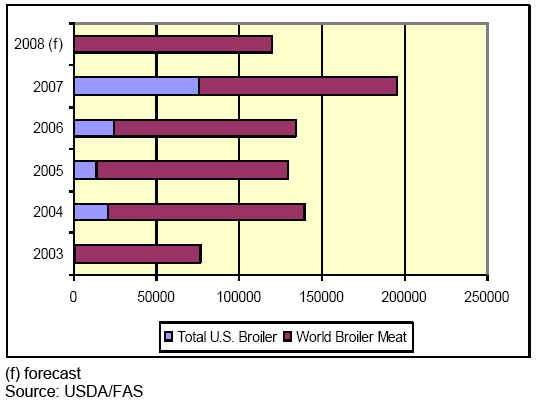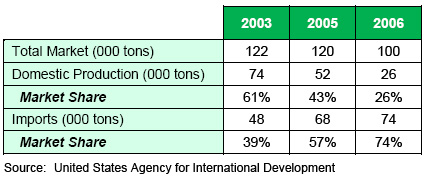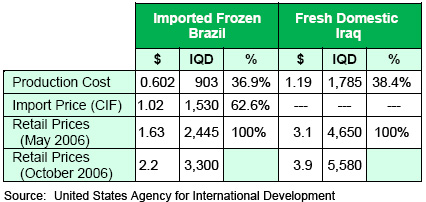



International Egg and Poultry Review
US - By the USDA's Agricultural Marketing Service - This is a weekly report looking at international developments concerning the poultry industry.Iraq
After the Iraqi government’s collapse in 2003, nearly 5 years of war, a bird flu scare, increased imports of lower priced chicken from Brazil and the United States (U.S. ) and with overall egg and poultry consumption down, Iraq’s poultry industry has been left in disarray. Approximately 40% of Bagdad’s eggs are currently imported. Iraq’s total poultry production held a 61% market share of their market in 2003 which diminished to 26% in 2006.
Despite Iraqi government efforts to revitalize the industry with a free market oriented policy, which included cancellation of controlled prices to consumers and total privatization of the industry, the broiler industry continued to have production problems. The result was many Iraqis sold their farms in 2003. Contrary to poultry production, egg production has rebounded since, although not at pre-war levels, stabilized in 1996 around 900 million units per year.
Even though poultry consumption has trended lower, some feel consumption could reverse direction and follow trends of other Middle Eastern countries and increase from 4.5 kg per capita to 15-20 kg., or 600,000 MT by 2010 which would strongly impact Iraq’s imports unless a competitive domestic industry is developed. With recent security improvements, the U.S. military has started working hand-in-hand with agricultural experts from the U.S. State Department to help make poultry growers competitive again within the domestic market. The military has branded its efforts “Operation Chicken Run.” The goals behind the initiative are to increase employment, economic security and ultimately stability.
In order to make Iraqi grown chicken and eggs competitive with imports it will require economies of scale. In order to do this they hope to band growers together with feed mills and processing plants. One way they have already started the process was by gathering some growers together and forming cooperatives. However, because many houses were used were used by insurgents to hide weapon caches, to make homemade explosives and insurgents would seize farmer’s equipment and strip generators for parts many of the farms must undergo renovations. Iraq’s poultry processing plants may also need funds for renovation and to get going. One group is receiving help from the government of Iraq, the U.S. military and the U.S. State Department in the repair of individual farmers’ facilities and their processing plant.
Sources: Department of Defense, United States Agency for International Development, USDA/FAS
U.S. Chicken & Shell Egg Exports
To Iraq
2003-2007 (Metric Tons)

Iraq Broiler Imports

Poultry Market in Iraq: Domestic Production vs. Imported

Poultry Market in Iraq: Production Costs –
Retail Prices of Domestic vs. Imported

Further Reading
| - | View the full report, including tables, by clicking here. |











